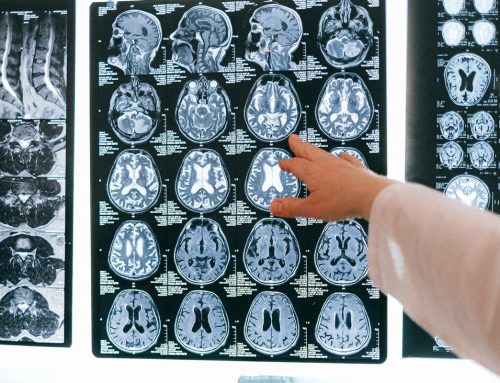Gary Karp: Estoy paralizado, pero no estoy quebrado! No necesito que me arreglen
Gary Karp Blogs for Ekso Bionics: I’m Not Broken
Posted on February 3, 2012 by Gary Karp
I’m paralyzed, but I’m not broken. I don’t need to be fixed.
You might be shocked by that statement. “How can you not want to walk again?! ,” you might think.
Well, it’s not about whether I want to walk. Of course I want to walk. That is, if I could walk the way I did before my injury. Easily, without fatigue, secure in my balance, painlessly. That’s a pretty tall order (especially given that I’m six foot two!).
I’m talking about how it feels to be viewed as someone who is broken. That is entirely apart from the question of whether I want to walk.
I once walked, now I don’t. I was unwise enough to fall out of a tree when I was a misdirected eighteen-year-old boy in 1973. I broke two vertebrae. I broke the connections in my spinal cord. I broke the communication between my brain and those muscles and nerves. In that sense, sure, I’m broken.
But when I’m seen—or treated—as someone who therefore needs to be fixed, that’s where the trouble begins.
If the prevailing view of paralysis—or having a disability of any kind—is that the most important thing is to try and fix people (because, of course, what else could broken people want?), then how will I be viewed as the whole person I am—in the context of my paralysis? If I’m damaged goods, then I’m a person whose life can only be improved—much less be a meaningful and satisfying life—if someone repairs my brokenness.
Seeing a person with a disability in these terms makes it more likely that they will not get the chance to show what they are capable of in the workplace, in intimate relationship, or any number of milieu where the perception of brokenness results in actual obstacles—however unintentional. Who is going to hire or make love with someone who’s broken? Through the “brokenness lens,” many would never consider either one (and definitely not both at once!).
Seeing disability as brokenness seriously misses the point. Most people with disabilities don’t spend their time wishing they could be fixed. However much seeking a cure might have been important in the early stages following an acquired disability, most people eventually get to “Well, I’d better get out there and live all the life I can, because waiting around for a cure isn’t doing me much good.”
They would tell you that it is not giving up. It’s moving on. This is a common perspective that many people arrive at in the process of re-embracing life after a traumatic injury or disease.
Regardless of a person’s disability, or how long ago it occurred or for what reasons it exists, everyone has a right to live as full and meaningful—and respected—a life as possible. Period.
If someone doesn’t ultimately get to that place post-disability, I think it’s a great loss. How often, I wonder, do people not get there because they are essentially poisoned by the “I’m broken” mindset, not even realizing they are operating on someone else’s misguided beliefs? Most of us figure out that these external attitudes don’t fit the truth of our actual experience. The force of our innate desire to be independent and active far outweighs the impulse to dwell on recovery. To dwell on it—as compared to healthily desiring it were it possible.
The attitude is “When you’ve got something that will make a difference for me, let me know. In the meantime, I’m out here doing my thing.”
The ones who really get it find a balance. They embrace all the life that is possible with paralysis (and there is a lot of life possible with paralysis) while taking good care of themselves to be a candidate for a future cure or technology. It’s a fine art of holding on to the desire for walking without feeling broken, while moving on with paralysis without hating it. Because if you hate it, then it’s pretty hard to not essentially hate your life. Or yourself. It’s a slippery psycho-slope.
If you’re wanting recovery, feeling broken, that’s fine. It will pass. You should at the same time refuse to accept being cast in the mold of being damaged goods. You should refuse to accept any denial of opportunity or possibility that you would choose to pursue. The “broken” social attitude already limits coverage for rehabilitation, for the optimal wheelchair, for the continuing removal of architectural barriers, or recognition by an interviewer of what you could offer in a workplace. A society that thinks of disability as something that must be fixed will never invest in the actual—and exploding—potential of people with disabilities.
What, then, of the exoskeleton? I don’t see it as something that will fix me, that will fill in something horribly missing in my life. After 38 years I’m so thoroughly adapted that not being able to walk is normal. For me.
For those of you who are much closer to your walking selves as a point of internal reference, try to think of the Ekso in terms of possibilities. What can it add to your mobility? How can it contribute to optimizing your health? It might even help keep you in shape for a cure which may very well arrive in the days to come.
Ekso Bionics’ Blogger Gary Karp is an author and speaker on what he calls the Modern Disability Experience. His work supports people making a recent adjustment to paralysis, and he helps business and government clients recognize and embrace the historic emergence of people with disabilities as employees. Learn more at www.moderndisability.com.
http://www.eksobionics.com/blog/2012/02/gary-karp-blogs-for-ekso-bionics-i%E2%80%99m-not-broken/
Gary Karp Blogs for Ekso Bionics: I’m Not Broken
Posted on February 3, 2012 by Gary Karp
I’m paralyzed, but I’m not broken. I don’t need to be fixed.
You might be shocked by that statement. “How can you not want to walk again?! ,” you might think.
Well, it’s not about whether I want to walk. Of course I want to walk. That is, if I could walk the way I did before my injury. Easily, without fatigue, secure in my balance, painlessly. That’s a pretty tall order (especially given that I’m six foot two!).
I’m talking about how it feels to be viewed as someone who is broken. That is entirely apart from the question of whether I want to walk.
I once walked, now I don’t. I was unwise enough to fall out of a tree when I was a misdirected eighteen-year-old boy in 1973. I broke two vertebrae. I broke the connections in my spinal cord. I broke the communication between my brain and those muscles and nerves. In that sense, sure, I’m broken.
But when I’m seen—or treated—as someone who therefore needs to be fixed, that’s where the trouble begins.
If the prevailing view of paralysis—or having a disability of any kind—is that the most important thing is to try and fix people (because, of course, what else could broken people want?), then how will I be viewed as the whole person I am—in the context of my paralysis? If I’m damaged goods, then I’m a person whose life can only be improved—much less be a meaningful and satisfying life—if someone repairs my brokenness.
Seeing a person with a disability in these terms makes it more likely that they will not get the chance to show what they are capable of in the workplace, in intimate relationship, or any number of milieu where the perception of brokenness results in actual obstacles—however unintentional. Who is going to hire or make love with someone who’s broken? Through the “brokenness lens,” many would never consider either one (and definitely not both at once!).
Seeing disability as brokenness seriously misses the point. Most people with disabilities don’t spend their time wishing they could be fixed. However much seeking a cure might have been important in the early stages following an acquired disability, most people eventually get to “Well, I’d better get out there and live all the life I can, because waiting around for a cure isn’t doing me much good.”
They would tell you that it is not giving up. It’s moving on. This is a common perspective that many people arrive at in the process of re-embracing life after a traumatic injury or disease.
Regardless of a person’s disability, or how long ago it occurred or for what reasons it exists, everyone has a right to live as full and meaningful—and respected—a life as possible. Period.
If someone doesn’t ultimately get to that place post-disability, I think it’s a great loss. How often, I wonder, do people not get there because they are essentially poisoned by the “I’m broken” mindset, not even realizing they are operating on someone else’s misguided beliefs? Most of us figure out that these external attitudes don’t fit the truth of our actual experience. The force of our innate desire to be independent and active far outweighs the impulse to dwell on recovery. To dwell on it—as compared to healthily desiring it were it possible.
The attitude is “When you’ve got something that will make a difference for me, let me know. In the meantime, I’m out here doing my thing.”
The ones who really get it find a balance. They embrace all the life that is possible with paralysis (and there is a lot of life possible with paralysis) while taking good care of themselves to be a candidate for a future cure or technology. It’s a fine art of holding on to the desire for walking without feeling broken, while moving on with paralysis without hating it. Because if you hate it, then it’s pretty hard to not essentially hate your life. Or yourself. It’s a slippery psycho-slope.
If you’re wanting recovery, feeling broken, that’s fine. It will pass. You should at the same time refuse to accept being cast in the mold of being damaged goods. You should refuse to accept any denial of opportunity or possibility that you would choose to pursue. The “broken” social attitude already limits coverage for rehabilitation, for the optimal wheelchair, for the continuing removal of architectural barriers, or recognition by an interviewer of what you could offer in a workplace. A society that thinks of disability as something that must be fixed will never invest in the actual—and exploding—potential of people with disabilities.
What, then, of the exoskeleton? I don’t see it as something that will fix me, that will fill in something horribly missing in my life. After 38 years I’m so thoroughly adapted that not being able to walk is normal. For me.
For those of you who are much closer to your walking selves as a point of internal reference, try to think of the Ekso in terms of possibilities. What can it add to your mobility? How can it contribute to optimizing your health? It might even help keep you in shape for a cure which may very well arrive in the days to come.
Ekso Bionics’ Blogger Gary Karp is an author and speaker on what he calls the Modern Disability Experience. His work supports people making a recent adjustment to paralysis, and he helps business and government clients recognize and embrace the historic emergence of people with disabilities as employees. Learn more at www.moderndisability.com.
http://www.eksobionics.com/blog/2012/02/gary-karp-blogs-for-ekso-bionics-i%E2%80%99m-not-broken/





